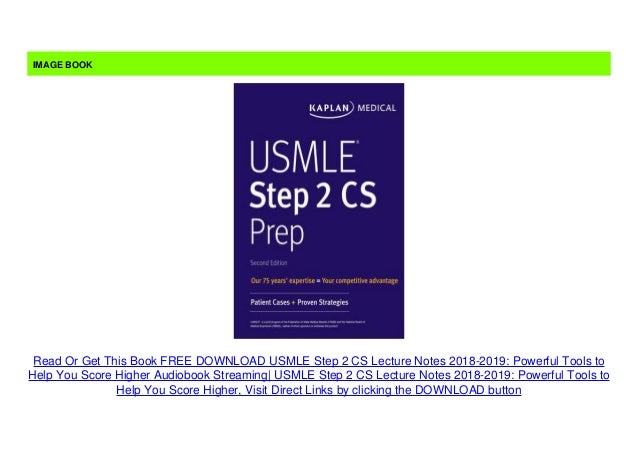

You earn a "pass" or a "fail" based on your ability to gather data, communicate with the patient and write an effective report. It includes both multiple choice questions and computer simulations of patient care. Like Step 2, Step 3 focuses on the diagnosis and treatment of patients. This is the final assessment of whether or not you're prepared to practice general medicine in an unsupervised setting.

Step 3 is a two-day test, usually taken after the first year of residency. For the Step 2 CS, students must travel to one of five testing centers around the country. The second (called Clinical Skills, or CS) requires you to examine and diagnose actors posing as patients. The first (called Clinical Knowledge, or CK), requires you to answer multiple–choice questions on clinical sciences like surgery, internal medicine, pediatrics and obstetrics and gynecology. Step 2 is a two-day test, usually taken in the fourth year of med school. Read More: Guide to Your Medical School Application

Topics such as nutrition, genetics and aging are also covered. It emphasizes knowledge of basic sciences, including anatomy, biochemistry, behavioral sciences, microbiology, immunology, pathology, pharmacology and physiology. Step 1 is a one-day test, usually taken at the end of the second year of med school. Students of osteopathic medicine can take either the USMLE or a similar test called the Comprehensive Osteopathic Medical Licensing Examination (COMEX).

The USMLE is designed for students of allopathic medicine, who are on the path to an MD. Some test-taking strategies will improve your performance, but you won't pass without comprehensive knowledge of the sciences, as well as an ability to apply that knowledge in a clinical setting. Second, unlike many standardized tests, the USMLE actually assesses your mastery of the material, not how well you take a test. First, you take each part at a different stage of your medical education.


 0 kommentar(er)
0 kommentar(er)
